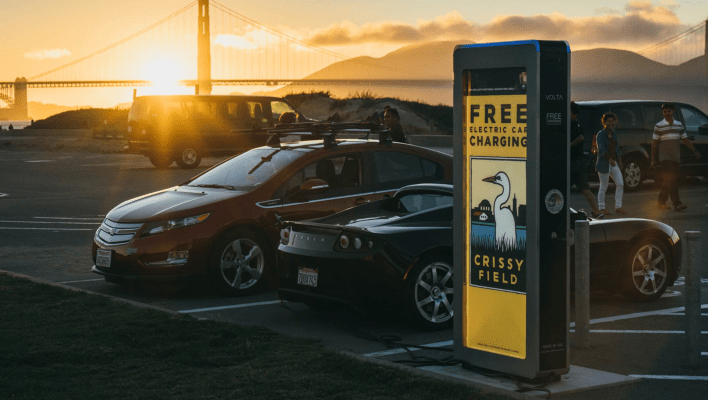Northern California has become a test bed for electric vehicle charging. It’s no accident; the region is home to more electric vehicles and EV charging stations than anywhere else in the country. Like other innovative industries, the EV charging models, products and services that prove successful over time will scale around the state, the country and the world.
EV charging companies compete to provide tailored EV charging equipment and services — based on different business models, hardware, speed, parking management and networking capabilities — to large employers, local governments and retail outlets. And those organizations have the power to set prices to incentivize drivers’ behavior.
That’s why a proposal from PG&E is so deeply troubling. The utility wants to insert itself right in the middle of the booming electric vehicle charging market in Northern California. It’s seeking approval from the California Public Utility Commission for broad control over the market in a way that will crowd out private investment, stifle innovation, and harm customers. The CPUC should either reject or substantially revise this proposal.
PG&E is seeking monopoly authority over EV charging in northern California. Under PG&E’s scheme, it would put in place 7,600 charging stations across northern California, and ratepayers would foot the bill. But here’s the rub: the proposal would cost ratepayers triple what it costs the private sector, and it is three times as large as the CPUC has called for.
What’s worse, PG&E would have sole authority to determine which companies can participate in the program and the rates they would charge. And for the fastest, most innovative charging stations (DC Fast Chargers), there would be absolutely no competition. This is a recipe for disaster.
There’s no question that PG&E has a significant role to play, and we all share the vision of a vast network of charging stations across the region. But how we achieve this is critically important.
Like other utilities in the state, PG&E should provide the basic “make ready” infrastructure — bringing wires, and conduits to parking spaces around the region. Then, electric vehicle companies could compete based on speed, quality, networked capabilities and a range of features.
Ultimately, the goal is to have an EV charging infrastructure in place that accelerates the shift away from fossil fuels and toward clean electricity. The full potential of EV charging has yet to be realized. But that’s why it is so important that one utility — which doesn’t have innovation in its DNA — shouldn’t have the power to dictate how the market works.
As the California Public Utilities Commission considers how to resolve this case, we urge it to preserve customer choice by ensuring a competitive and innovative market. We look forward to working closely with the utility, so it can focus on providing safe and reliable electricity service, and we can focus on developing products and services that make it possible for California to remain the leader in electric vehicles and electric vehicle charging.
